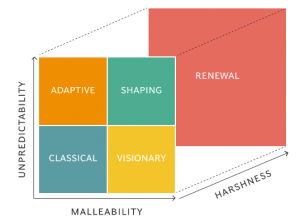These days, employers are scrambling to find the best ways to retain new employees, an important goal considering seemingly endless opportunities available to today’s workforce.
However, knowing when to make an effort to retain new employees and when to tell them to hit the road isn’t always clear. These are some of the questions that may keep managers up at night:
● Should I fire the new person? Have I given them enough time to prove themselves?
● Should I be doing more to make sure this new person stays with the company?
● How long should I wait before I decide what to do?
According to a recent study commissioned by Fullbridge, an educational technology company, 78% of executives think employers decide whether to keep or fire new employees within their first three months. Surprisingly, 27% think this decision happens in the first two weeks! It begs the question, are employers giving new employees enough time to prove themselves? And are employers and managers effectively onboarding new employees so they develop in a reasonable period of time? Let’s try to answer those questions right now…
Employee Onboarding Done Right
New employee onboarding has a significant influence of new employee productivity, development, retention and engagement, all ingredients to forming a picture-perfect employee. It’s easy to think of onboarding as putting together a few documents to sign, but it’s so much more than that.
In fact, companies with standard onboarding processes experience 54% greater productivity, 50% greater new hire retention and employees of companies with longer onboarding programs gain full proficiency 34% faster than shorter programs. Here are some tips on making your employee onboarding process what it should be:
➔ Invest in paperless onboarding. This is 2016. Having the right employee onboarding software is key to effective onboarding because it streamlines the parts of the process no one wants to do! This frees up time for managers to start focusing on new employee development.
➔ Incorporate trust building into the onboarding process. Give new employees inspiration by showing them they are part of the team and are valued. Happy employees are 12% more productive and companies with happy employees outperform the competition by 20%. Give them your trust so you can earn theirs!
➔ Throw them into the culture of the company as soon as possible. This means making introductions with not just their team, but leadership, encouraging social events with team members, having the occasional team outing or lunch date, anything that bonds your new employees with the company and their team. Realizing what their part is and where they fit in will do wonders for engagement and team building.
Reaching Full Potential
Did you know it takes 8 to 12 months for a new employee to gain proficiency comparable to their veteran coworkers? And that’s just proficiency. That means it can take a year or more for a new employee to really break into their new role. Yet, employers are giving them the boot in three months if they disappoint? That’s not fair and it’s costing employers a lot of money to bring new employees in and out of the company. The organizational cost of replacing an employee is estimated to range between 100% and 300% of the replaced employee’s salary.
➔ Do this: Set a healthy, standard amount of time for each new employee to “prove” themselves to you based off of their individual progress and time to develop. You don’t have to share this information with them, but simply keep in mind that each person will develop at a different pace.
Establishing a Timeline
Each company spends a different amount of time on onboarding, but is it enough? Focusing on exactly what goes into each stage of onboarding can be imperative to a new employee’s performance. Here is an outline of what, at the very least, should happen in each stage employee onboarding:
➔ Month 1: Focusing on relationships, team building, employee engagement and learning company policies, procedures and the basics of the job.
➔ Months 3 to 6: Frequent conversations about performance should start to occur along with practical goal setting, building on strengths and assuring that lines of communication are wide open.
➔ Month 6 to 12: The employee should be growing in their role and picking up new responsibilities. When a year is up, managers can stop considering this person a new hire and start discussing their future with the company (or lack thereof).
It’s So Easy
Getting new employee onboarding right doesn’t have to be challenging. With the right employee onboarding software, the right outlook and the right timing, your company can start building a stellar workforce that beats out the competition every time.
Business & Finance Articles on Business 2 Community(42)
Report Post




